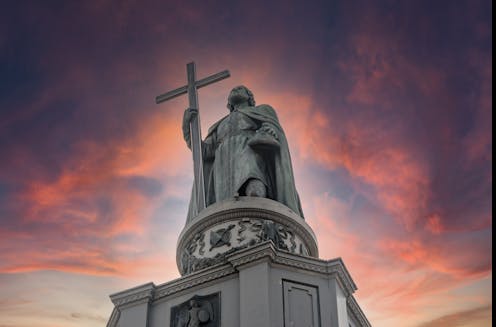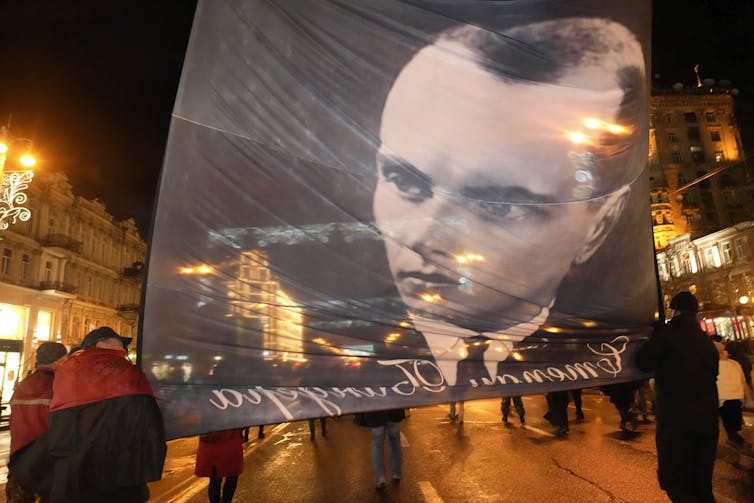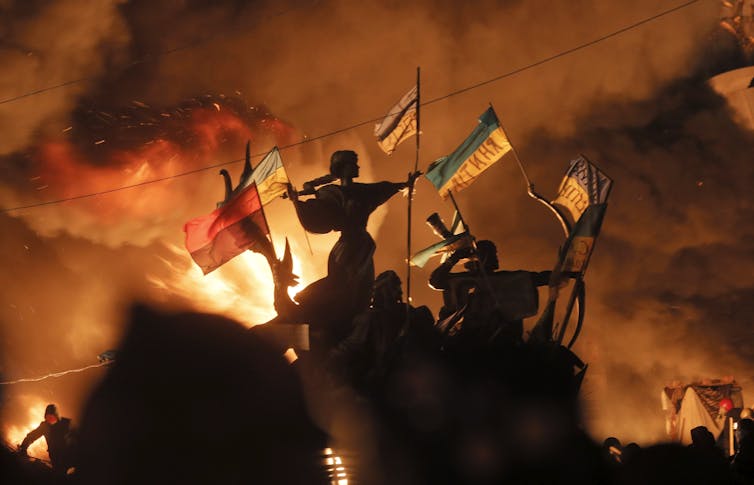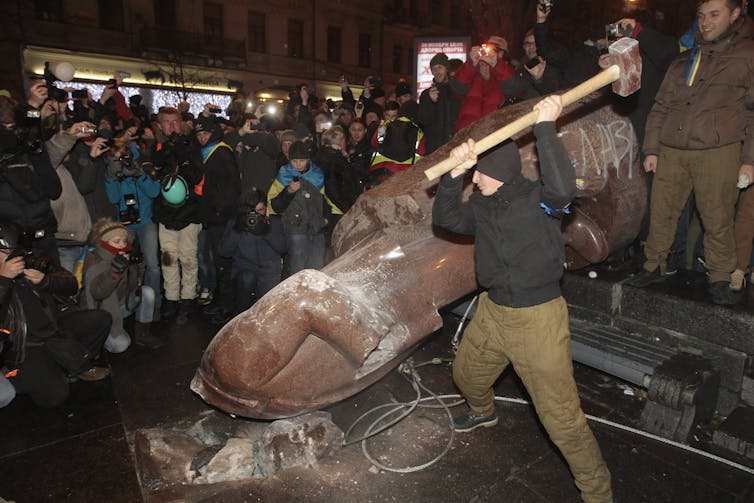
Vladimir Putin’s interest in history is well known. He has accused Poland of starting the Second World War. He maintains that the Soviet Union liberated the western world from Nazism and any discussion over that view is “historical revisionism.”
His focus has been four-pronged.
First, like the narrative of the former Soviet Union, Putin regards the 10th century Kyivan Rus state as the foundation of modern Russia, Ukraine and Belarus. A statue to the first prince to embrace Christianity, Volodymyr (in Russian, Vladimir), was erected in Moscow in 2016, a provocative counter to the much older one that’s been in Kyiv since 1853.
In this way, Russia challenged Ukraine’s historical legacy as the first of the eastern Slavic states to embrace the Orthodox religion.
Second, Putin perceives the period of the Russian Empire — spanning 1721 to 1917 — as a positive phenomenon. In March 2014, when Russia annexed Crimea from Ukraine, he made reference to the return of the peninsula to the “Russian harbour” and to the revival of what he termed the “Russkiy mir (Russian world).”
Demonizing Ukrainian nationalism
Putin’s third focus is Ukrainian nationalism from the 1930s to early 1950s, particularly the wing of the Organization of Ukrainian Nationalists (OUNb) led by Stepan Bandera after 1940 and the 1942 formation of its military, the Ukrainian Insurgent Army (UPA).

At certain points both the OUNb and the UPA collaborated with the German occupying forces and the UPA fought Soviet security forces in a protracted conflict in western Ukraine until the early 1950s.
The war was brutal, bitter and nothing was yielded by either side. The Soviet Union had superior forces and eventually prevailed. Roman Shukhevych, the commander of UPA, was killed in a skirmish near Lviv in 1950. Bandera was poisoned by Soviet agents in Germany in 1959.
The Soviet Union subsequently demonized both the OUNb and UPA, portraying them as Nazi collaborators and traitors to their country. But in the Ukrainian diaspora of North America and Europe, they were heroes and “fighters for Ukrainian independence.”
Read more: Putin's claim to rid Ukraine of Nazis is especially absurd given its history
Maidan uprising
Putin’s fourth focus has centred on 2014, when the Maidan (Ukrainian for “central square”) uprising reached its peak in Kyiv and other cities and the UPA red-and-black flag appeared on the streets among the array of blue-and-yellow Ukrainian flags. The Right Sector and the political party Svoboda, both from the far right political spectrum, entered the conflict.

The protests turned violent, and ultimately the president of Ukraine, Viktor Yanukovych, fled to Russia.
According to Putin and his associates, “neo-Nazis” had taken over Ukraine in a coup d'état. The assertion was used specifically to justify Russia’s annexation of Crimea.
War broke out in the Donbas region of eastern Ukraine following the intervention of Russia in alliance with some local leaders. Some in the far eastern regions of Ukraine were outraged by the Maidan clashes and the May 2014 killing of 42 anti-Maidan activists in Odessa.
Russia intervened directly in this war twice — in August 2014 and February 2015 — to ensure the separatists were not defeated by Ukraine’s “anti-terrorist operation” launched by acting President Oleksandr Turchynov.
What now?
Do Putin’s four historical lenses explain his Ukraine invasion? Or has he been fuelled simply by his belief that Russia and Ukraine should be joined as one people linked by history, religion and culture?
Oddly, Putin made no attempt either in 2014 or in 2022 to reinstate Yanukovych as president, demonstrating his total lack of confidence in his former acolyte.
And his accusations of Nazism in Ukraine don’t reflect the reality of the changes introduced in the country since 2014.
Yanukovych was replaced by an oligarch, Petro Poroshenko, who adjusted quickly to the radical mood in the country. He approved the 2015 Memory Laws that made it illegal to display Soviet symbols in Ukraine. Lenin statues were toppled and Communist city and street names eradicated.

The far-right squads from Right Sector and Svoboda that had infiltrated the Maidan protests failed to make any impact politically.
They were also negligible in the 2019 elections when Volodymyr Zelensky, a TV comedian with no political background, defeated Poroshenko in a landslide. They won one seat between them when his hastily constructed centrist party Servant of the People swept parliament.
Read more: Volodymyr Zelensky's appeal lies in his service to Ukrainians above all else
What does this all mean? As an independent country, Ukraine has suffered from corruption, poverty and violent periods, but Putin’s accusations hardly describe today’s reality.
Ukraine is more democratic than Russia, it holds regular elections, and there is relative freedom of speech and assembly. This supposed “neo-Nazi” regime is led by a Russophone Jew from eastern Ukraine.
Putin’s view of Ukrainian history and current forces in Ukraine is deeply, perhaps deliberately flawed.
David Roger Marples does not work for, consult, own shares in or receive funding from any company or organisation that would benefit from this article, and has disclosed no relevant affiliations beyond their academic appointment.
This article was originally published on The Conversation. Read the original article.







